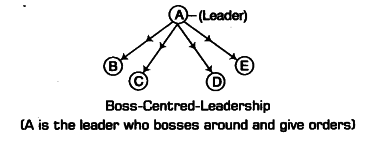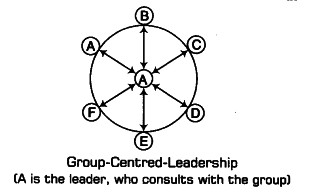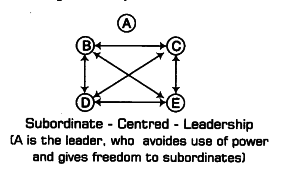Leadership styles :
1.Authoritarian or Autocratic Leadership
An autocratic leader exercises complete control over the subordinates. He gives orders and expects his subordinates to follow them. It follows one way communication, as the subordinate acts only according to the command given by the manager.
The leader is dogmatic and does not wish to be changed or opposed. This leadership style is very effective in getting productivity in factory situations and facilitate quick decision-making. As shown in the diagram, the decision making power is centralized in the leader.

2.Democratic or Participative Leadership
A democratic leader takes decisions after consultation and encourages the participation of subordinates. This leadership style is more common and popular, as it ensure achievement of goals, when they are set with the acceptance of the subordinates themselves. A democratic leader provides freedom of thinking and listens to suggestions, grievances and opinions of the subordinates. This improves the attitude of the employees towards their jobs and the organisation, thereby increasing their morale.
This style is of mutual benefit which allows subordinates to become part of team and help leaders (seniors) to make better decisions.
As shown in the figure, the leader involves subordinates in decision-making.

3. Free-rein or Laissez Faire Leadership
It involves complete delegation of authority, so that subordinates themselves take decisions. The free-rein leader avoids holding power and surrenders the authority to subordinates. He serves as a link who helps in bringing the information and resources needed by the subordinates.
This is also known as laissez faire which means no interference in the affairs of others (In French, laissez means to let/allow and faire means to do).
This style of leadership is appropriate when the subordinates are well trained, knowledgeable, self-motivated and ready to assume responsibility.
